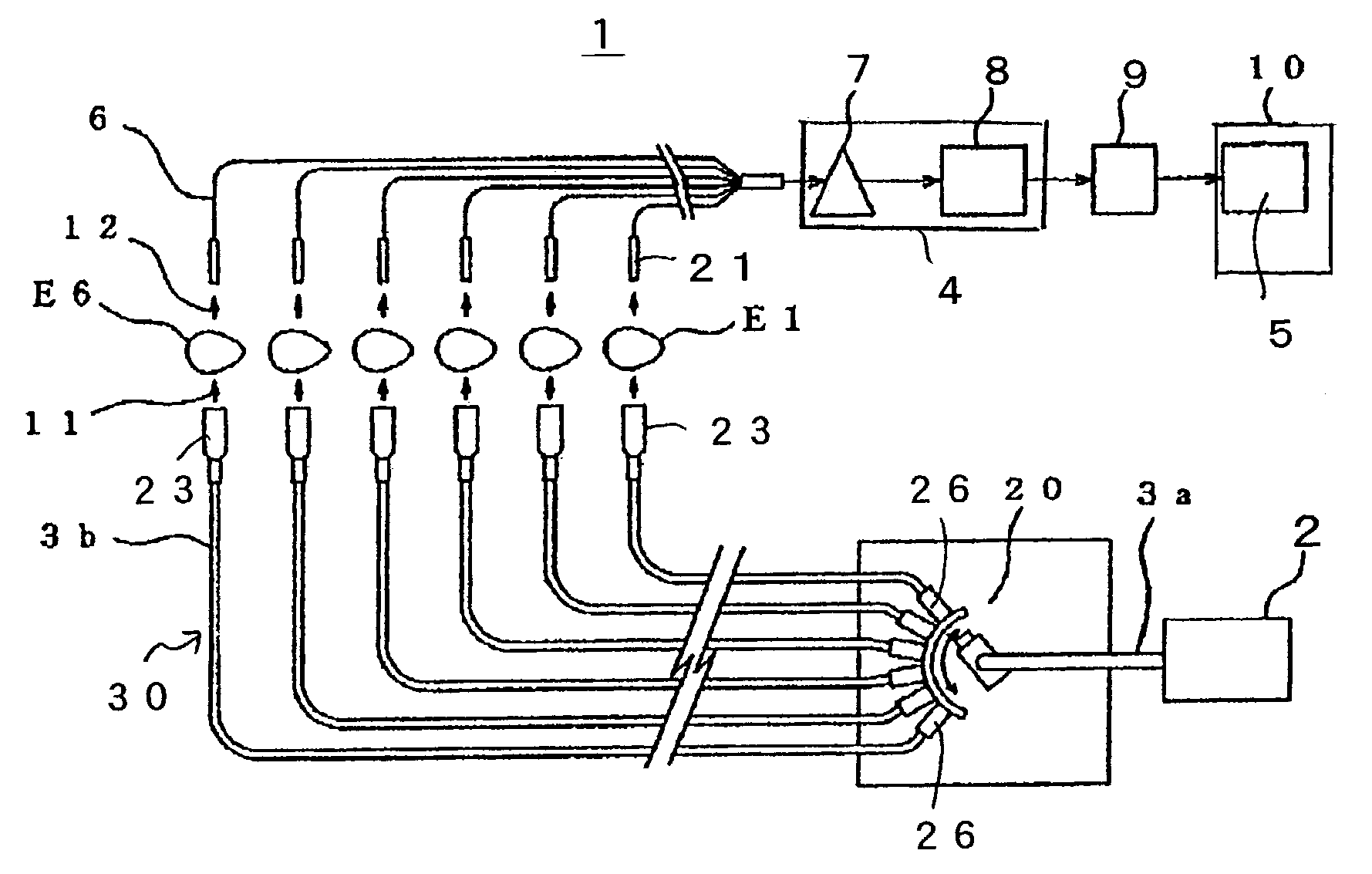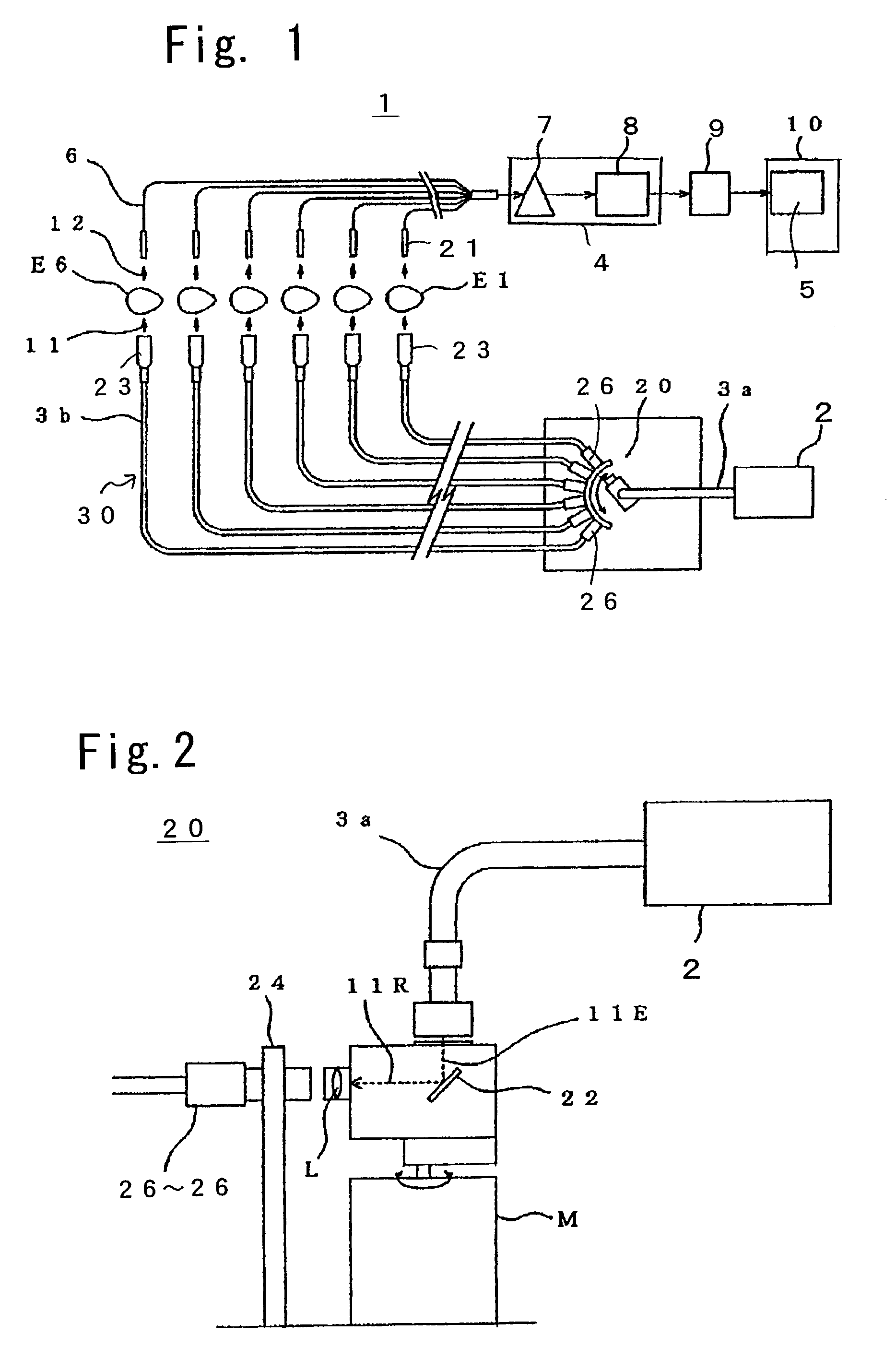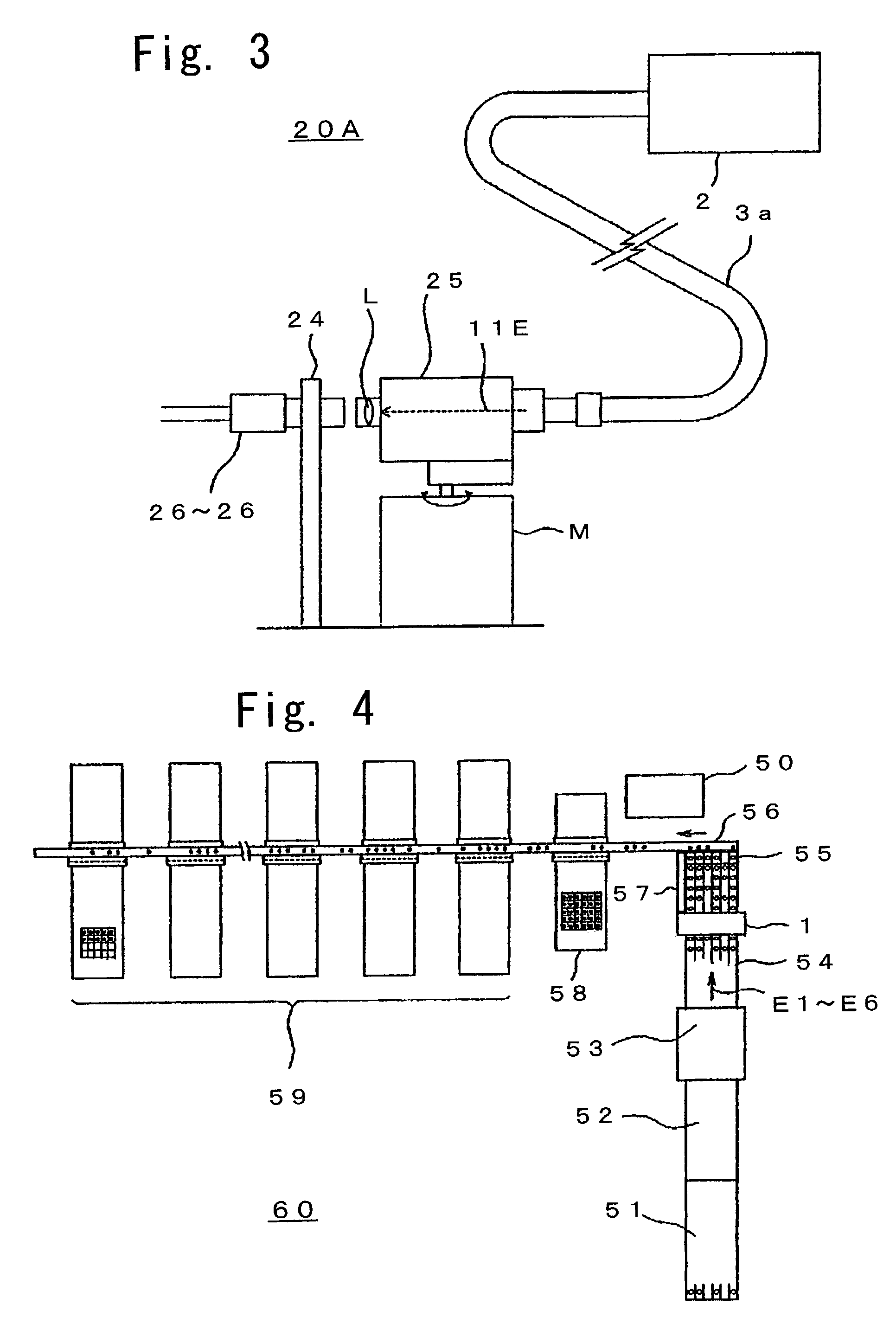Method and apparatus for detecting blood in shell eggs
a shell egg and blood technology, applied in the direction of testing food, investigating moving fluids/granular solids, instruments, etc., can solve the problems of egg shipping without help, egg accuracy and reproducibility tend to fluctuate, and the egg inspection method has not yet been developed. , to achieve the effect of reducing brightness, increasing equipment size, and high brightness
- Summary
- Abstract
- Description
- Claims
- Application Information
AI Technical Summary
Benefits of technology
Problems solved by technology
Method used
Image
Examples
example 1
[0035]An egg inspecting apparatus 1 of the structure shown in FIG. 1 was assembled with the use of an automatic optical path selector 20 for selecting one of optical paths by causing a plane mirror 22 to undergo an angular movement, optical projecting fibers 3a each made up of a bundled configuration of 34,230 optical fiber strands of 50 micrometers in diameter, optical projecting fibers 3b each made up of a bundle configuration of 12,390 optical fiber strands of 50 micrometers in diameter and optical receiving fibers 6 each made up of a bundled configuration of 15 optical fiber strands of 200 micrometers in diameter. This egg inspecting apparatus 1 was incorporated in an egg grading and packaging system 60 of the structure shown in FIG. 4 and was then operated so that a white light 11 emitted from a light source 2 was guided selectively into the optical projecting fibers 3b by means of the automatic optical path selector 20 synchronized with operation of the six-row transport drive...
example 2
[0038]An egg inspecting apparatus 1 of the structure shown in FIG. 3 was assembled with the use of an automatic optical path selector 20A for selecting one of optical paths by causing an optical head 25 to undergo an angular movement, optical projecting fibers 3a each made up of a bundled configuration of 34,230 optical fiber strands of 50 micrometers in diameter, optical projecting fibers 3b each made up of a bundled configuration of 12,390 optical fiber strands of 50 micrometers in diameter and optical receiving fibers 6 each made up of a bundled configuration of 12 optical fiber strands of 200 micrometers in diameter. This egg inspecting apparatus 1 was incorporated in an egg grading and packaging system 60 of the structure shown in FIG. 4 and the experiment was carried out in a manner similar to that in Example 1.
[0039]As shown in Table 2, when using this technique 1,876 eggs were examined, the rate of correctness at which the normal eggs were correctly identified was 100% in th...
example 3
[0041]Using the egg inspecting apparatus of the structure shown in FIG. 6, a white light 11 emitted from a halogen lamp 2A of 100 watt rated output was used to illuminate white, rose-pink or brown colored normal eggs and light 12 transmitted through the normal eggs was spectrally analyzed and, using a system in which the transmitted light 12 is received by a photodiode array 18 capable of receiving light at intervals of 0.9 nm and converted into an electric signal, after the spectrum measurement, recording was made for each of the shell colors according to a command from an arithmetic unit 19. The spectrum of the egg E was measured in a similar manner and, in order to eliminate undesirable effects attributable to the thickness of the egg shell, the spectrum was normalized with respect to the light transmittance at the wavelength of 685 nm at which a component of the egg would virtually absorb no light. When a secondary differential curve of such spectrum was formulated, the shell co...
PUM
| Property | Measurement | Unit |
|---|---|---|
| wavelengths | aaaaa | aaaaa |
| wavelength band | aaaaa | aaaaa |
| wavelength band | aaaaa | aaaaa |
Abstract
Description
Claims
Application Information
 Login to View More
Login to View More - R&D
- Intellectual Property
- Life Sciences
- Materials
- Tech Scout
- Unparalleled Data Quality
- Higher Quality Content
- 60% Fewer Hallucinations
Browse by: Latest US Patents, China's latest patents, Technical Efficacy Thesaurus, Application Domain, Technology Topic, Popular Technical Reports.
© 2025 PatSnap. All rights reserved.Legal|Privacy policy|Modern Slavery Act Transparency Statement|Sitemap|About US| Contact US: help@patsnap.com



